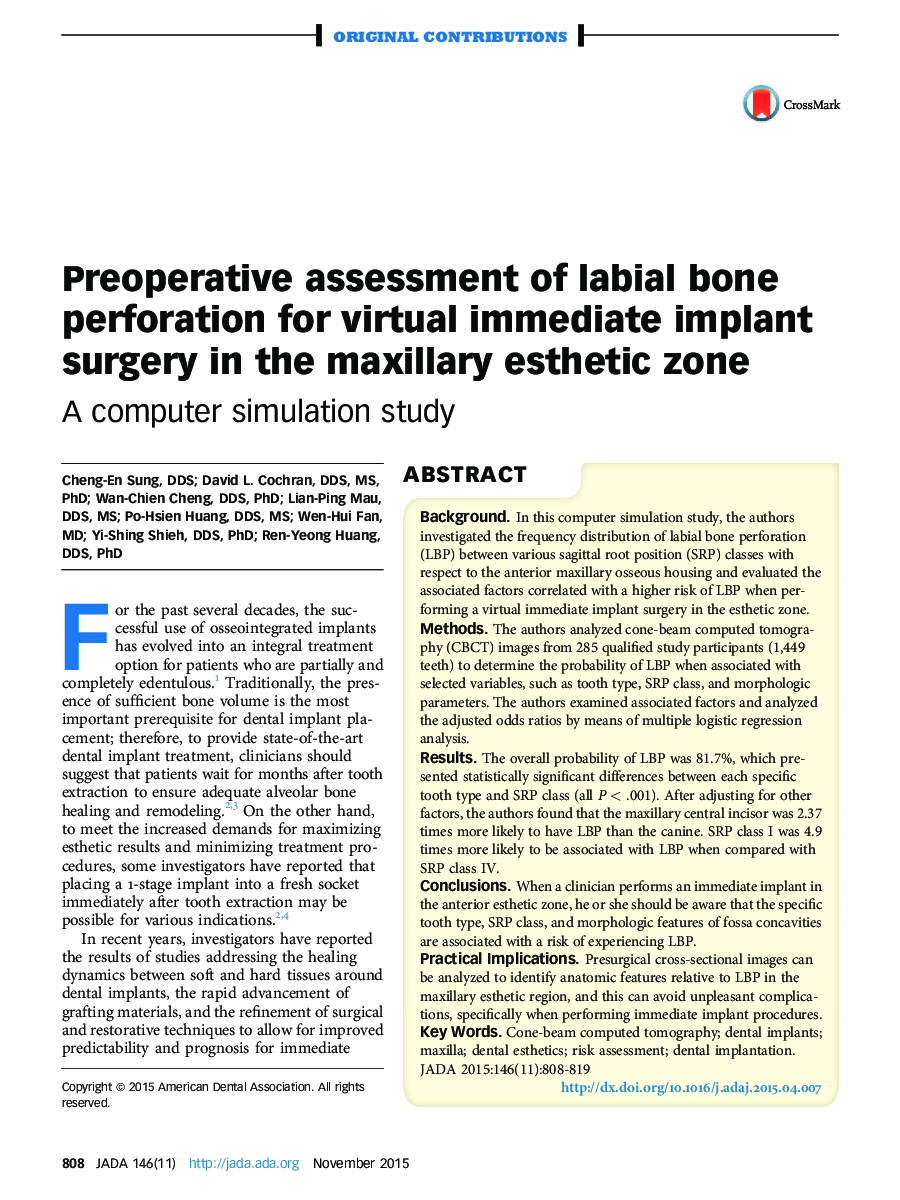| Article ID | Journal | Published Year | Pages | File Type |
|---|---|---|---|---|
| 3136483 | The Journal of the American Dental Association | 2015 | 12 Pages |
BackgroundIn this computer simulation study, the authors investigated the frequency distribution of labial bone perforation (LBP) between various sagittal root position (SRP) classes with respect to the anterior maxillary osseous housing and evaluated the associated factors correlated with a higher risk of LBP when performing a virtual immediate implant surgery in the esthetic zone.MethodsThe authors analyzed cone-beam computed tomography (CBCT) images from 285 qualified study participants (1,449 teeth) to determine the probability of LBP when associated with selected variables, such as tooth type, SRP class, and morphologic parameters. The authors examined associated factors and analyzed the adjusted odds ratios by means of multiple logistic regression analysis.ResultsThe overall probability of LBP was 81.7%, which presented statistically significant differences between each specific tooth type and SRP class (all P < .001). After adjusting for other factors, the authors found that the maxillary central incisor was 2.37 times more likely to have LBP than the canine. SRP class I was 4.9 times more likely to be associated with LBP when compared with SRP class IV.ConclusionsWhen a clinician performs an immediate implant in the anterior esthetic zone, he or she should be aware that the specific tooth type, SRP class, and morphologic features of fossa concavities are associated with a risk of experiencing LBP.Practical ImplicationsPresurgical cross-sectional images can be analyzed to identify anatomic features relative to LBP in the maxillary esthetic region, and this can avoid unpleasant complications, specifically when performing immediate implant procedures.
